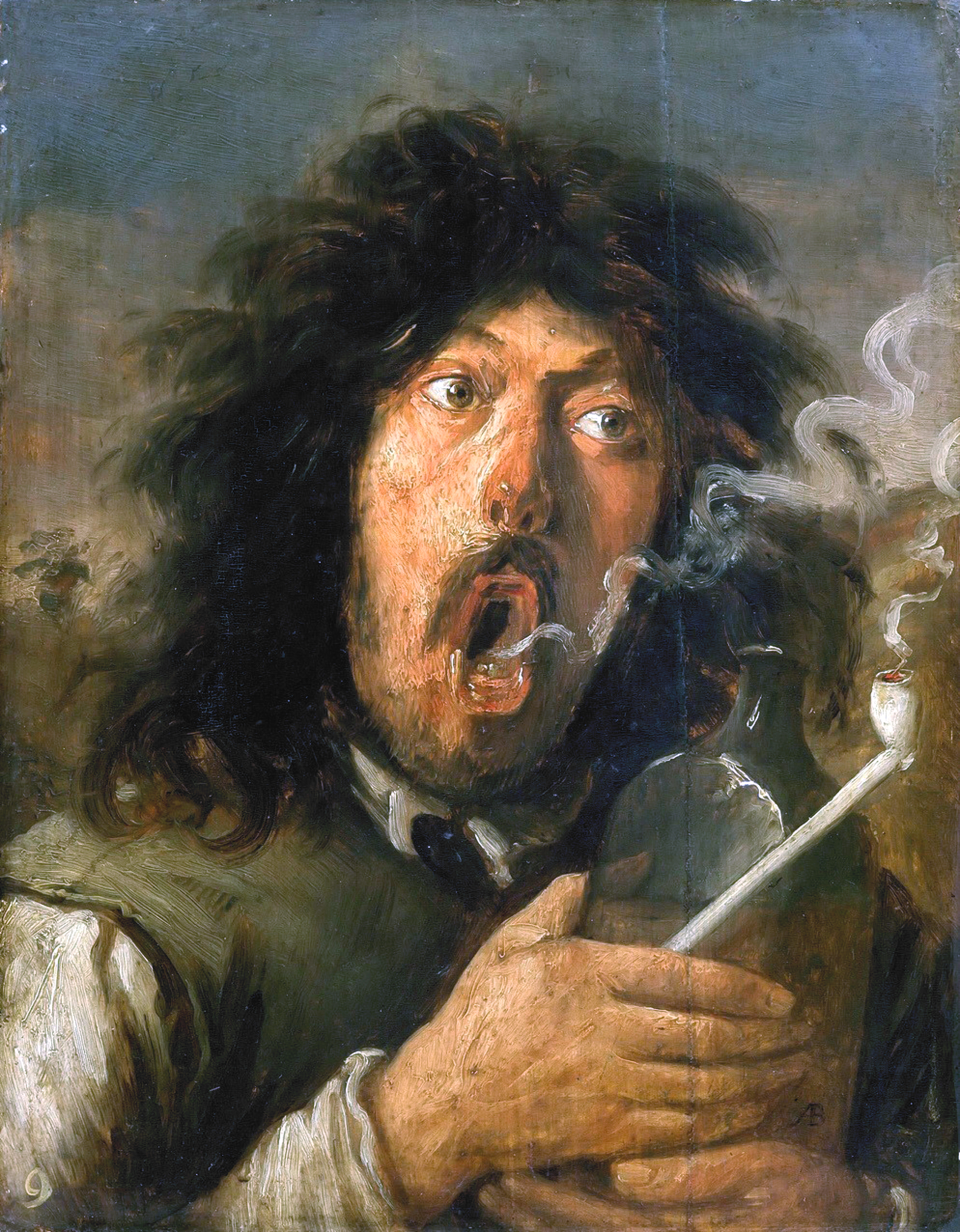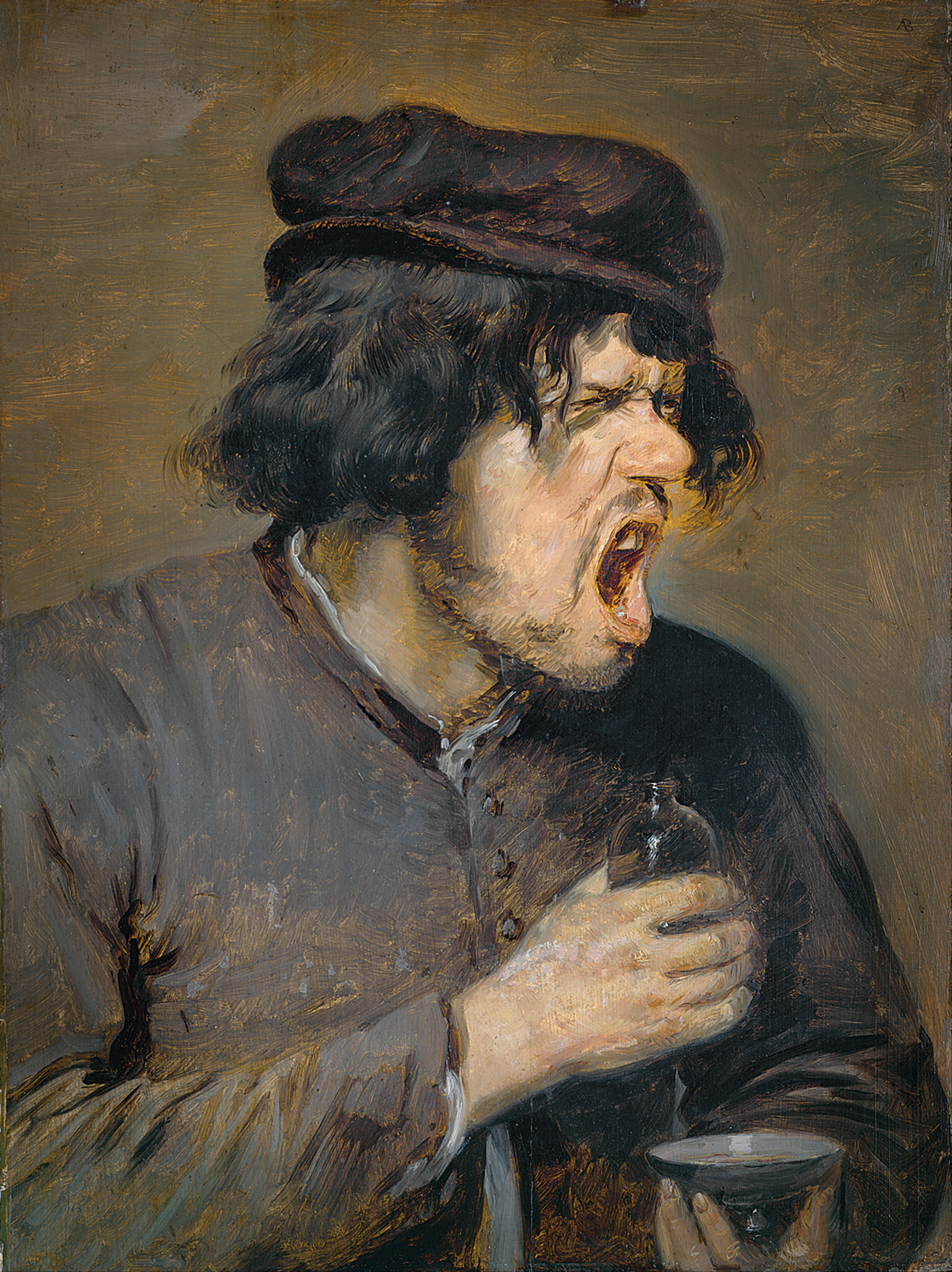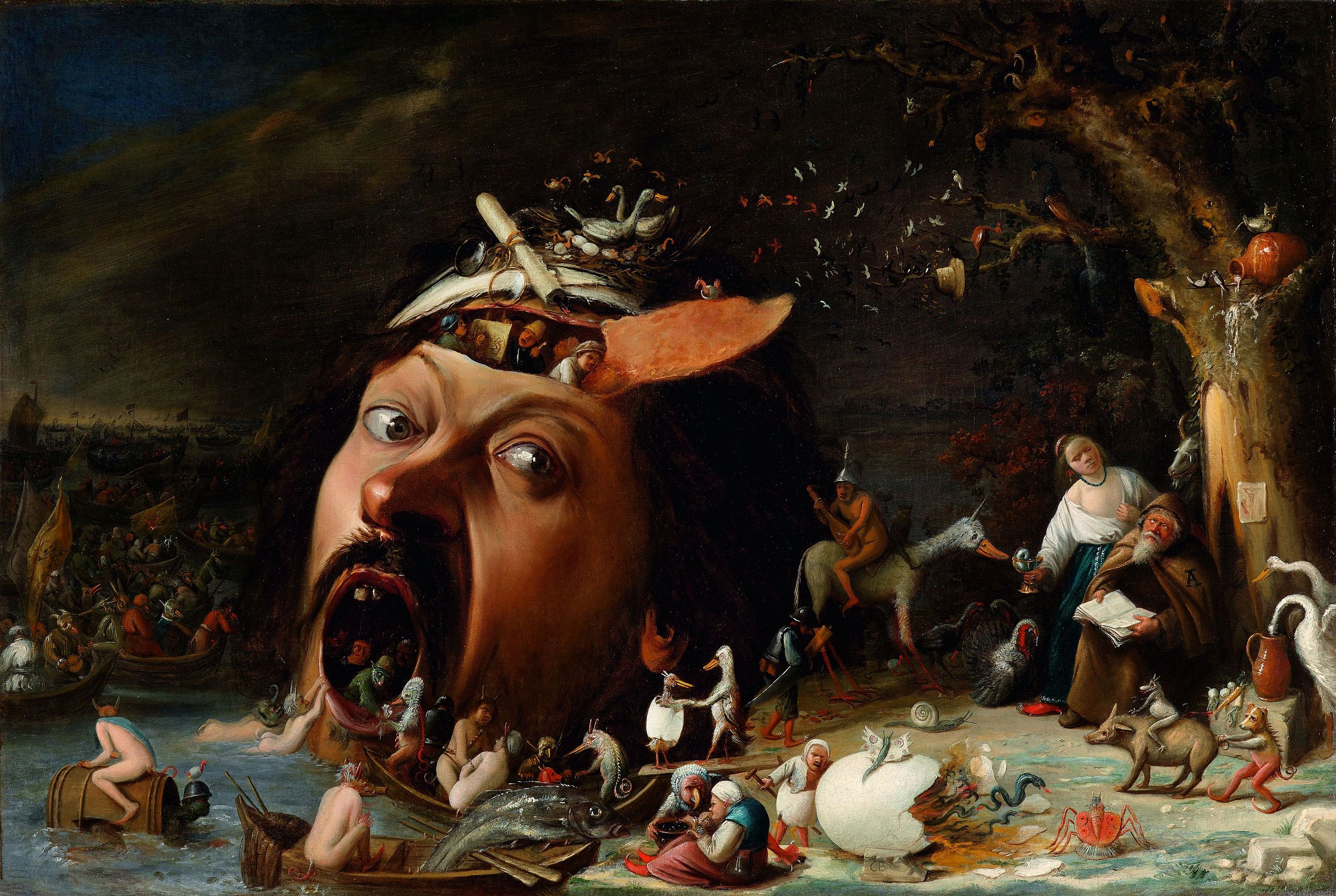|
Tronie
A tronie is a type of work common in Dutch Golden Age painting and Flemish Baroque painting that depicts an exaggerated or characteristic facial expression. These works were not intended as portraits but as studies of expression, type, physiognomy or an interesting character such as an old man or woman, a young woman, the soldier, the shepherdess, the Oriental, or a person of a particular race, etc.Walter Liedtke, ''Vermeer and the Delft School'', New York, 2001, p. 138Dagmar Hirschfelder, ''Tronie und Porträt in der niederländischen Malerei des 17. Jahrhunderts'' Berlin: Mann, 2008, p. 351-359 The main goal of the artists who created tronies was to achieve a lifelike representation of the figures and to show off their illusionistic abil ... [...More Info...] [...Related Items...] OR: [Wikipedia] [Google] [Baidu] |
Adriaen Brouwer
Adriaen Brouwer (, in Oudenaarde – January 1638, in Antwerp) was a Flemish painter active in Flanders and the Dutch Republic in the first half of the 17th century.Adriaen Brouwer at the Konrad Renger. "Brouwer, Adriaen." Grove Art Online. Oxford Art Online. Oxford University Press. Web. Konrad Renger, ''Craesbeeck raesbeke Joos van,'' Grove Art Online. Oxford University Press. Web. 3 January 2016. Brouwer was an important innovator of |
Dutch Golden Age Painting
Dutch Golden Age painting is the painting of the Dutch Golden Age, a period in Dutch history roughly spanning the 17th century, during and after the later part of the Eighty Years' War (1568–1648) for Dutch independence. The new Dutch Republic was the most prosperous nation in Europe and led European trade, science, and art. The northern Netherlandish provinces that made up the new state had traditionally been less important artistic centres than cities in Flanders in the south. The upheavals and large-scale transfers of population of the war, and the sharp break with the old monarchist and Catholic cultural traditions, meant that Dutch art had to reinvent itself almost entirely, a task in which it was very largely successful. The painting of religious subjects declined very sharply, but a large new market for all kinds of secular subjects grew up. Although Dutch painting of the Golden Age is included in the general European period of Baroque painting, and often shows many of ... [...More Info...] [...Related Items...] OR: [Wikipedia] [Google] [Baidu] |
Joos Van Craesbeeck
Joos van Craesbeeck (''c''. 1605/06 – ''c''. 1660) was a Flemish baker and a painter who played an important role in the development of Flemish genre painting in the mid-17th century through his tavern scenes and dissolute portraits. His genre scenes depict low-life figures as well as scenes of middle-class people. He created a few religiously themed compositions.Konrad Renger, ''Craesbeeck raesbeke Joos van,'' Grove Art Online. Oxford University Press, ccessed 1 March 2015/ref> Life Joos van Craesbeeck was born in Neerlinter (now a village in Flemish Brabant, Belgium). His father was also called Joos and is believed to have been a baker. His mother's name was Gertruid van Callenborch. In 1630 or 1631 Joos van Craesbeeck married Johanna Tielens. His wife's father was a baker but her family also counted artists among its members: the landscape painter Jan Tielens was her uncle while two of her uncles on her mother's side were the sculptors Melchior and Caspar Grison. [...More Info...] [...Related Items...] OR: [Wikipedia] [Google] [Baidu] |
Jan Van De Venne
Jan van de Venne or Jan van der Venne, also known as Pseudo van de Venne (active by 1616 – died before 1651), was a Flemish painter of genre, religious scenes, and cabinets who was court painter to the governors of the Southern Netherlands.'' The Temptation of St Antony'' at the National Inventory of Continental European Paintings Many of his works depict "low-life" genre scenes of tooth-pullers, card-players and players, tronies and expressive religious scenes.Hans Vlieghe (1998). ''Flemish Art and Architecture, 1585–1700''. Pelican History of Art. New Haven: Yale University Press, p. 159. ... [...More Info...] [...Related Items...] OR: [Wikipedia] [Google] [Baidu] |
Franchoys Elaut
Franchoys Elaut (baptized 27 August 1589, in Haarlem – buried on 22 September 1635, in Haarlem) was a Dutch still life painter active in Haarlem. He is known for his monochrome banquet style still lifes, merry company paintings and so-called ''tronie''s, i.e. portrait-like paintings of certain facial or figure types or emotions.Franchoys Elaut at the His work shows the influence of other Haarlem painters of his time who painted similar subjects.Fred G. Meijer, ''Een nieuwe kijk op Franchoys Elaut (1589-1635)'', Oud Holland Oud Holland Vol. 109, No. 1/2 (1995), pp. 18-31 Life Franchoys Elau ...[...More Info...] [...Related Items...] OR: [Wikipedia] [Google] [Baidu] |
Jacob Dissius
Jacob Abrahamsz. Dissius (1653 - 1695) was a Dutch typographer and printer. He is most notable as an art collector and for his links to Johannes Vermeer - his collection included 21 Vermeer works (including '' The Milkmaid'', '' Portrait of a Young Woman'', '' A Girl Asleep'', '' Woman Holding a Balance'' and ''The Music Lesson'') and in 1680 he married Madgdalene, daughter and sole heir of Vermeer's main patron Pieter van Ruijven. Dissius died in 1695 and his collection was auctioned off in Amsterdam the following year. Biography Jacob Dissius was baptised on 23 November 1653 in Delft as the son of Maria Cloeting and the printer Abraham Dissius. He married Magdalena Pieters van Ruijven, daughter of Pieter van Ruijven, born in 1655. Dissius' father-in-law was one of the wealthier citizens of Delft, and became a patron of Vermeer. She inherited her parents' money and art collection after the death of her mother in 1681. When she died childless in 1682, he inherited her collection o ... [...More Info...] [...Related Items...] OR: [Wikipedia] [Google] [Baidu] |
Flemish Baroque Painting
Flemish Baroque painting refers to the art produced in the Southern Netherlands during Spanish control in the 16th and 17th centuries. The period roughly begins when the Dutch Republic was split from the Habsburg Spain regions to the south with the Spanish recapturing of Antwerp in 1585 and goes until about 1700, when Spanish Habsburg authority ended with the death of King Charles II.Vleighe, p. 1. Antwerp, home to the prominent artists Peter Paul Rubens, Anthony van Dyck, and Jacob Jordaens, was the artistic nexus, while other notable cities include Brussels and Ghent. Rubens, in particular, had a strong influence on seventeenth-century visual culture. His innovations helped define Antwerp as one of Europe's major artistic cities, especially for Counter Reformation imagery, and his student Van Dyck was instrumental in establishing new directions in English portraiture. Other developments in Flemish Baroque painting are similar to those found in Dutch Golden Age painting ... [...More Info...] [...Related Items...] OR: [Wikipedia] [Google] [Baidu] |
The Gypsy Girl - Malle Babbe
''The Gypsy Girl'' (sometimes erroneously referred to as ''Malle Babbe'') is an oil-on-wood painting by the Dutch Golden Age painter Frans Hals, painted in 1628-1630, and now in the Louvre Museum, in Paris. It is a tronie, a study of facial expression and unusual costume, rather than a commissioned portrait. The display of cleavage was not a common feature of costume seen in public in Hals' time and place. Painting This painting was cataloged by Hofstede de Groot in 1910, who wrote "119. THE GYPSY GIRL. B. 41; M. 263 – Half-length; life-size. A laughing gypsy girl, seen almost in full face, looks down towards the right. Her brown hair falls on her shoulders. She wears a red bodice over a white chemise which exposes her breast. Yellow flesh-tones. A superb picture." Hofstede de Groot noticed that the dress of the sitter in this painting is similar to two other paintings by Hals, and he included them on either side of this one (catalog numbers 118 and 120). This paintin ... [...More Info...] [...Related Items...] OR: [Wikipedia] [Google] [Baidu] |
Flora (Rembrandt, Hermitage)
''Flora'' or ''Saskia as Flora'' ( Bode 336; Dut. 267; Wb. 412; B.-HdG. 189) is a 1634 oil-on-canvas painting by Rembrandt, depicting his wife Saskia van Uylenburgh as the goddess Flora. It is held by the Hermitage Museum in St. Petersburg. Description The life-size quarter-length work was painted in Amsterdam, during a period when the young artist was experiencing early success. He married Saskia in June 1634, and he made several paintings of her in the guise of characters from ancient myth, similar to his other character portraits (tronies). This work is thought to depict Saskia as Flora, Roman goddess of spring and flowers. She is standing in a grotto, looking towards the viewer, swathed in an extravagant and exotic costume of silk and satin with silver embroidery, with long hanging sleeves and a blue mantle, and wears a large pearl earring. She has a floral headdress over her long hair, including a multicoloured "broken" tulip. She is also carrying a staff also decorat ... [...More Info...] [...Related Items...] OR: [Wikipedia] [Google] [Baidu] |
Rembrandt
Rembrandt Harmenszoon van Rijn (, ; 15 July 1606 – 4 October 1669), usually simply known as Rembrandt, was a Dutch Golden Age painter, printmaker and draughtsman. An innovative and prolific master in three media, he is generally considered one of the greatest visual artists in the history of art and the most important in Dutch art history.Gombrich, p. 420. Unlike most Dutch masters of the 17th century, Rembrandt's works depict a wide range of style and subject matter, from portraits and self-portraits to landscapes, genre scenes, allegorical and historical scenes, biblical and mythological themes and animal studies. His contributions to art came in a period of great wealth and cultural achievement that historians call the Dutch Golden Age, when Dutch art (especially Dutch painting), whilst antithetical to the Baroque style that dominated Europe, was prolific and innovative. This era gave rise to important new genres. Like many artists of the Dutch Golden Ag ... [...More Info...] [...Related Items...] OR: [Wikipedia] [Google] [Baidu] |
Frans Floris
Frans Floris, Frans Floris the Elder or Frans Floris de Vriendt (17 April 15191 October 1570) was a Flemish painter, draughtsman, print artist and tapestry designer. He is mainly known for his history paintings, allegorical scenes and portraits.Frans Floris at the Netherlands Institute for Art History He played an important role in the movement in Northern Renaissance painting referred to as Romanism. The Romanists had typically travelled to Italy to study the works of leading Italian |
Etching
Etching is traditionally the process of using strong acid or mordant to cut into the unprotected parts of a metal surface to create a design in intaglio (incised) in the metal. In modern manufacturing, other chemicals may be used on other types of material. As a method of printmaking, it is, along with engraving, the most important technique for old master prints, and remains in wide use today. In a number of modern variants such as microfabrication etching and photochemical milling it is a crucial technique in much modern technology, including circuit boards. In traditional pure etching, a metal plate (usually of copper, zinc or steel) is covered with a waxy ground which is resistant to acid. The artist then scratches off the ground with a pointed etching needle where the artist wants a line to appear in the finished piece, exposing the bare metal. The échoppe, a tool with a slanted oval section, is also used for "swelling" lines. The plate is then dipped in a bath of ac ... [...More Info...] [...Related Items...] OR: [Wikipedia] [Google] [Baidu] |







_-_Self-portrait.jpg)
